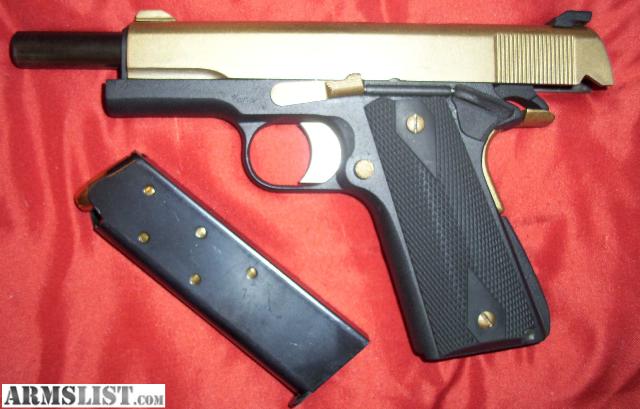

45 automatic as a “legendary manstopper,” and the long-standing American conviction that the 9mm automatic was an impotent wimp thing that would make your wife a widow if you trusted your life to it. When Germans shot Americans with their 9mm Luger pistols, the Americans tended to become indignant and kill the German who shot them, and then walk to an aid station to either die a lingering death or recover completely. 45 automatics, the Germans tended to fall down and die. The bottom line was that when Americans shot Germans with Colt. 45 shot this impressive group in a police-style qualification.Ĭountless tales of up close and personal pistol fighting emerged from WWI. 45 automatic was the ticket to getting out of the trenches alive once the enemy hordes had flowed into those trenches with you.Ī “snubby” with 3-inch barrel, the Springfield Armory Micro Compact 1911. To hell with bayoneted rifles, said the doughboys this Colt. 45 slug struck the enemy in the wishbone, he tended to be immediately rendered hors de combat. Eight quick flicks of the index finger unleashed eight heavy 230-grain bullets, almost half an inch in diameter and traveling some 830 feet per second. The 1911 pistol, on the other hand, proved to be in its element there. But, when the enemy was right there in the trenches with you, ready to spear you with the blood-stained bayonet of his Mauser, these long, heavy rifles that needed a four-step process to hand-cycle another cartridge into the firing chamber were not the optimum defensive tools. 30/06 battle rifles had proven themselves splendidly rugged and accurate when sniping at enemy soldiers across the battlefield. The bolt-action 1903 Springfield and 1917 Enfield. The 1911A1 would remain the classic shape of this classic pistol for the remainder of the century. The hammer was reconfigured and the grip safety’s tang lengthened in hopes of preventing the pinch at the web of the hand that many doughboys had reported when the gun was cycling. Bigger sights that were easier to see were added. Its trigger was much shorter and easier to reach, and this was aided by new scalloping around the trigger guard area of the frame.

Before 1930, this advice coalesced into the improved Model 1911A1. It was determined that about half the soldiers thought the 1911 pistol had too long a trigger, too short a grip tang safety, and sights that were just about useless. In the early 1920s, a US military board convened to determine what had been learned in the Great War that could improve the design of the nation’s military small arms. This allowed the fastest possible revolver reload…right about the time all the cops decided they wanted semiautomatic pistols, which were faster still to reload.
FEDERAL ORDNANCE 1911 MAGAZINE FULL
45 auto cartridges together for fast reloading of these “revolvers using autoloader ammo.” Not until the last quarter of the 20th century would shooters figure out that a full moon clip could hold six such cartridges at once. These used ingenious half-moon clips developed by S&W to hold three of the “rimless”. Though the “.45 automatic” was the first choice, the industry couldn’t make enough of them and both Colt and Smith & Wesson pressed their revolver lines into production for the classic Model 1917 double action revolvers. In the trenches of WWI, for the first and the last time in American military history, it was determined that every single one of America’s troops needed to carry a. 45 case is in mid-air above gun, but recoil has barely lifted the muzzle from the centerline of the target. Here Ayoob fires the tiny Springfield Micro Compact. With modern techniques, even the lightest, hardest kicking 1911. And how John Browning’s brilliant design of a semiautomatic pistol in that caliber, as manufactured by Colt, was subsequently adopted as “Pistol, US, calibre. 45 caliber should be issued as a sidearm to US troops.

How this led to the Thompson/LaGarde study of handgun ammunition effectiveness in 1907 that indicated nothing of less than. 45 revolvers were dragged out of mothballs and re-issued to embattled American troops in the Pacific. 38 revolver failed miserably against psyched-up Moro warriors, and ancient. How during the Philippine insurrection, the newly issued. If you’ve read American firearms history at all, you know the lore of the.


 0 kommentar(er)
0 kommentar(er)
